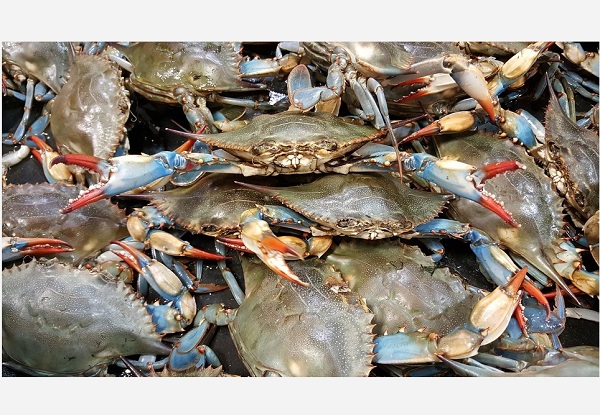BALTIMORE, MD—The Chesapeake Bay blue crab population has fallen to its second-lowest level in history, according to a new survey, raising concerns about the health of the iconic species. The joint survey, conducted by the Virginia Institute of Marine Science and Maryland Department of Natural Resources, found an estimated 238 million blue crabs in 2025, just shy of the all-time low of 226 million set in 2022.
This year’s decline was seen across all age groups, with adult male crabs at 26 million, adult female crabs at 108 million, and juvenile crabs at 103 million. These numbers are significantly lower than 2024’s slightly below-average results.
The blue crab, a Chesapeake Bay staple, is facing numerous threats, including habitat loss, invasive predators, climate change, and pollution. The loss of underwater grasses, a critical nursery habitat for young crabs, has been a significant concern. Additionally, the rise of invasive predators like blue catfish, which feed on young crabs, has further impacted the population.
Chesapeake Bay Foundation (CBF) polling results show that residents believe blue crabs are the Bay animal in most need of protection. The blue crab’s short lifespan precludes a single solution. Only a comprehensive, collaborative approach can improve the population.
“The red flags are flying for blue crabs,” said Dr. Allison Colden, Maryland Executive Director of the Chesapeake Bay Foundation (CBF). “With more than five years of below-average crab numbers, it is clear that changing conditions in the Bay are undermining the current management of this important species.”
While the exact causes of the decline are still not fully understood, a comprehensive stock assessment for blue crabs is underway and expected to be completed in late 2026. The last assessment was conducted nearly 15 years ago in 2011, highlighting the need for updated data to inform conservation efforts.
In response to the declining numbers, CBF is urging Maryland and Virginia to implement stronger conservation measures. These recommendations include maintaining current regulations for male crabs and further strengthening protections for female crabs in Maryland, and reducing the blue crab harvest in Virginia.
The organization also calls on the federal government to fully fund programs and agencies like the National Oceanic and Atmospheric Administration (NOAA) and Environmental Protection Agency that support regional clean water initiatives crucial for protecting blue crab habitat.
“Blue crabs are a staple on our plates, in our water, and in our culture,” said Chris Moore, Virginia Executive Director of CBF. “We must protect them in order to ensure their important role in the Chesapeake Bay ecosystem and preserve sustainable harvests for the most valuable commercial fishery in the Bay.”
This article was written with the assistance of AI and reviewed by a human editor.
Photo via Pixabay


